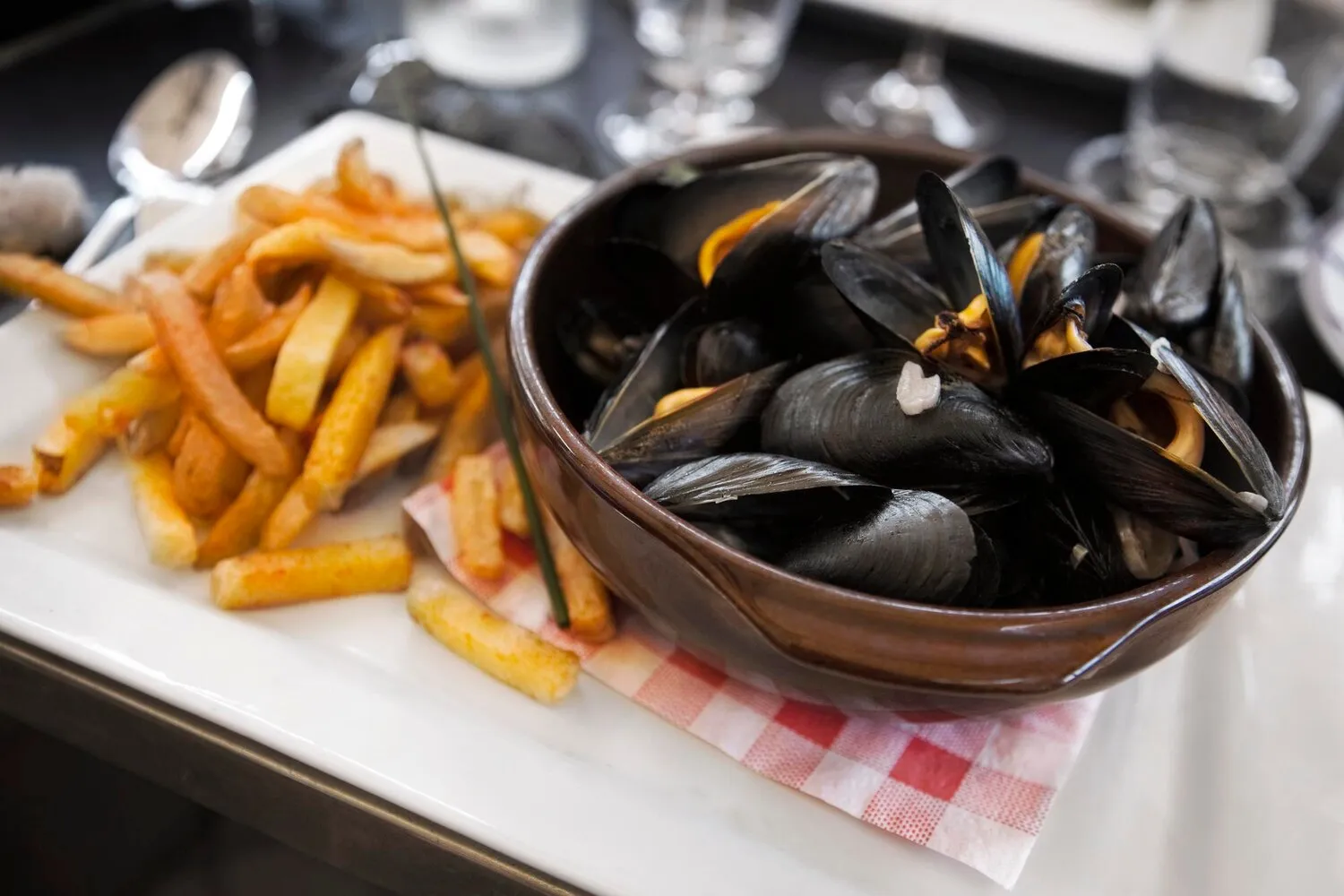
Carbonade Flamande
Beef stew braised in beer, a traditional Flemish dish. A hearty and flavorful option.
Nutrition Facts
* The % Daily Value (DV) tells you how much a nutrient in a serving of food contributes to a daily diet. 2,000 calories a day is used for general nutrition advice.
Carbonade Flamande, like many European stews, likely originated as a peasant dish, utilizing inexpensive cuts of beef and readily available ingredients. The use of beer reflects Belgium's long and celebrated brewing tradition, dating back to the Middle Ages, where monasteries played a key role in beer production. Stewing and braising were common cooking methods for tenderizing tougher meats and preserving food, crucial before modern refrigeration. The addition of ingredients like mustard and bread is indicative of regional variations and resourcefulness in enhancing flavor and thickening the sauce.
Carbonade Flamande is considered a national dish of Belgium, deeply ingrained in Flemish culinary heritage and often enjoyed during festive occasions and family gatherings. It represents the hearty, comforting, and communal nature of Belgian cuisine.
Family Tradition
Recipes for Carbonade Flamande are often passed down through generations, with each family having their own unique variations and secrets. It's a dish that evokes feelings of home and nostalgia.
Beer Culture
The dish is a testament to Belgium's rich beer culture, showcasing the diverse range of flavors that Belgian beers can offer and their integral role in the country's culinary identity.
Flemish Pride
Carbonade Flamande is a symbol of Flemish regional pride, representing the unique culinary traditions and ingredients of the Flanders region of Belgium.
Carbonade Flamande boasts a rich, savory, and slightly sweet flavor profile, primarily derived from the slow-braised beef, dark beer, and caramelized onions.
The foundation of the flavor is the deep, beefy taste imparted by the braised chuck steak or similar cut. The dark beer, typically a Belgian Dubbel or brown ale, contributes a malty sweetness and subtle bitterness, complemented by notes of caramel and dark fruit. Caramelized onions add sweetness and depth, while mustard provides a tangy counterpoint. The dish is often finished with a slice of bread spread with mustard or gingerbread, which dissolves into the sauce, thickening it and adding a unique flavor dimension. Herbs like thyme and bay leaf provide aromatic complexity.
Beer Selection
Choose a good-quality Belgian Dubbel or brown ale for the best flavor. Avoid overly bitter or hoppy beers, as they can overwhelm the other flavors.
Beef Quality
Use chuck steak or another cut of beef that benefits from slow braising. Marbling is key to tenderness and flavor.
Caramelization is Key
Take your time to properly caramelize the onions. This is crucial for developing the sweet and savory depth of the dish.
Slow and Low
Braise the beef at a low temperature for a long time to ensure it becomes incredibly tender and the flavors meld together beautifully.
Mustard Bread
Don't skip the mustard-slathered bread. It acts as a thickening agent and adds a subtle tang that complements the sweetness of the beer and onions. Gingerbread can also be used.
Explore additional Belgian dishes and restaurants
Explore BelgianDiscover top dining spots and culinary experiences in Namur.
Explore NamurLearn more about the food culture, restaurant scene, and culinary heritage of Belgium.
Explore Belgium